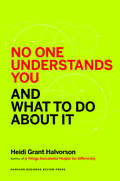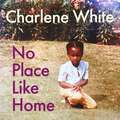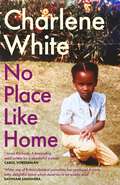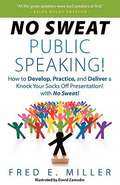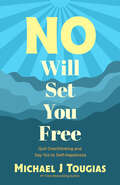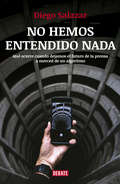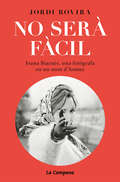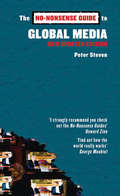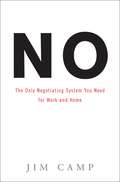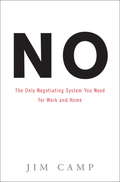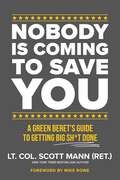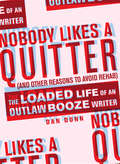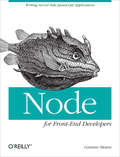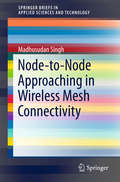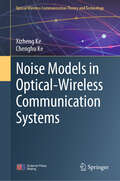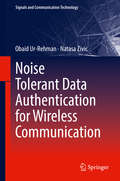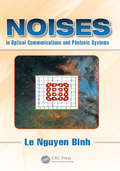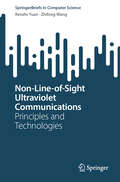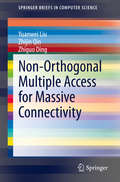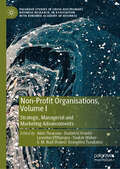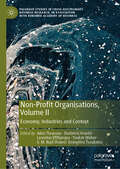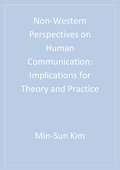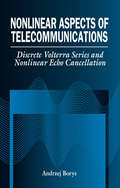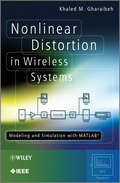- Table View
- List View
No One Understands You and What to Do About It
by Heidi Grant HalvorsonHave you ever felt you're not getting through to the person you're talking to, or not coming across the way you intend? You're not alone.That's the bad news. But there is something we can do about it. Heidi Grant Halvorson, social psychologist and bestselling author, explains why we're often misunderstood and how we can fix that.Most of us assume that other people see us as we see ourselves, and that they see us as we truly are. But neither is true. Our everyday interactions are colored by subtle biases that distort how others see us-and also shape our perceptions of them.You can learn to clarify the message you're sending once you understand the lenses that shape perception: Trust. Are you friend or foe? Power. How much influence do you have over me? Ego. Do you make me feel insecure?Based on decades of research in psychology and social science, Halvorson explains how these lenses affect our interactions-and how to manage them.Once you understand the science of perception, you'll communicate more clearly, send the messages you intend to send, and improve your personal relationships. You'll also become a fairer and more accurate judge of others. Halvorson even offers an evidence-based action plan for repairing a damaged reputation.This book is not about making a good impression, although it will certainly help you do that. It's about coming across as you intend. It's about the authenticity we all strive for.
No Ordinary Assignment: A Memoir
by Jane Ferguson"A haunting memoir of disarming honesty. . . a remarkable testament to the anguish and the beauty of foreign correspondence.”—Roger Cohen, New York Times Paris bureau chief and author of An Affirming Flame From award-winning journalist Jane Ferguson, an unflinching memoir of ambition and war—from The Troubles to the fall of Kabul.Jane Ferguson has covered nearly every war front and humanitarian crisis of our time. She reported from Yemen as protests grew into the Arab Spring; she secured rare access to rebel-held Syria, where foreign journalists were banned, to cover its civil war. When the Taliban claimed Kabul in 2021, she was one of the last Western journalists to remain at the airport as thousands of Afghans, including some of her colleagues, struggled to evacuate. Living with sectarian violence was nothing new to Ferguson. As a child in Northern Ireland in the 1980s and ‘90s, The Troubles meant bomb threats and military checkpoints on the way to school were commonplace. Books by Dervla Murphy and Martha Gellhorn offered solace from her turbulent family, and an opportunity to study Arabic in Yemen came as a relief—and a ticket to the life in journalism she imagined. Without family wealth or connections, she began as a scrappy one-woman reporting team, a borrowed camera often her only equipment. Networks told her she had the wrong accent, the wrong appearance, not enough “bang-bang shoot-‘em-up.” Still, Ferguson threw herself into harm’s way time and again, determined to give voice to civilian experiences of war. In the face of grave violence and suffering, this seemed a small act of justice, no matter the risks.Ferguson’s bold debut chronicles her unlikely journey from bright, inquisitive child to intrepid war correspondent. With an open-hearted humanity we rarely see in conflict stories, No Ordinary Assignment shows what it means to build an authentic career against the odds.
No Place Like Home: ‘A universal message … Warm, witty and delightful’ SATHNAM SANGHERA
by Charlene White'White, one of Britain's boldest journalists, has produced a warm, witty, delightful memoir which deserves to be widely read' Sathnam Sanghera, author of Empireland'I loved this book. A fascinating read written by a wonderful woman' Carol Vorderman'To feel as though you belong and knowing who you are are both the most important necessities of life and essential to one's wellbeing. This historic, inspirational book demonstrates that' Baroness Floella Benjamin, OM DBEHome is a vital base for us to thrive, yet, for some, the question of where home is isn't as simple as an address.Depending on circumstance, 'home' may not simply be where we rest, eat and sleep. With the concept of home comes questions of ancestry, identity and belonging, and the understanding that there is no one fixed idea of what or where home is.In No Place Like Home, Charlene White boldly shares her own story and understanding of home as a Jamaican Londoner exploring all the smells, memories and voices from her childhood. Alongside her personal story, White interviews eight individuals who give their perspectives on home and their experiences that are shaped by myriad events from difficult family situations to desperate political upheaval and war. No Place Like Home is a powerful and heartfelt exploration of family, food and finding your place, as well as the moments in history that have changed the way we feel about the simplest of terms: 'home'.
No Place Like Home: ‘A universal message … Warm, witty and delightful’ SATHNAM SANGHERA
by Charlene White'White, one of Britain's boldest journalists, has produced a warm, witty, delightful memoir which deserves to be widely read' Sathnam Sanghera, author of Empireland'I loved this book. A fascinating read written by a wonderful woman' Carol Vorderman'To feel as though you belong and knowing who you are are both the most important necessities of life and essential to one's wellbeing. This historic, inspirational book demonstrates that' Baroness Floella Benjamin, OM DBEHome is a vital base for us to thrive, yet, for some, the question of where home is isn't as simple as an address.Depending on circumstance, 'home' may not simply be where we rest, eat and sleep. With the concept of home comes questions of ancestry, identity and belonging, and the understanding that there is no one fixed idea of what or where home is.In No Place Like Home, Charlene White boldly shares her own story and understanding of home as a Jamaican Londoner exploring all the smells, memories and voices from her childhood. Alongside her personal story, White interviews eight individuals who give their perspectives on home and their experiences that are shaped by myriad events from difficult family situations to desperate political upheaval and war. No Place Like Home is a powerful and heartfelt exploration of family, food and finding your place, as well as the moments in history that have changed the way we feel about the simplest of terms: 'home'.
No Sweat Public Speaking!: How to Develop, Practice and Deliver a Knock Your Socks Off Presentation! With No Sweat!
by Fred E. MillerThe book details the components, parts and elements of a speech. Fred names them - explains them - and gives examples throughout the book.
No Will Set You Free: Quit Overthinking and Say Yes to Self-Happiness
by Michael J. Tougias&“Smart, interactive solutions to help you get better at saying no while minimizing hurt feelings and maintaining relationships . . . indispensable.&” —Vanessa Bohns, PhD, professor of Organizational Behavior at Cornell University and author of You Have More Influence Than You Think Break Free and Learn To Say No We&’ve all been taught to seize the moment and say yes without considering the downside. No Will Set You Free empowers you to take back your life and control your own time again. &“No&” can come in many shapes and sizes, yet saying it can be difficult. We may think it&’s selfish but this simple word is necessary to thrive in life. This informative guide helps you discover and follow your true desires, find more time to invest in those you love, and pursue your real interests. Saying no can be hard. Really hard. Author Michael J. Tougias understands. As a former people-pleaser himself, Michael wields a combination of research, personal stories, and proven methods to help us understand our actions and stop saying yes. Through his witty rapport detailing his own setbacks and triumphs, we learn how to stop people-pleasing and how to, ultimately, honor our authentic selves. Inside No Will Set You Free, you&’ll Find: Studies that help us understand our urge to say yes and how to learn to say no Personal stories and anecdotes about the journey to &“No&”, how it relieves stress, and leads to a more productive life Steps, tips, and tricks to control your life through the power of No &“By setting boundaries one can zero in on what is important. For [Tougias], that means more time for his family, his health, his hobbies of bike riding and being in nature and writing.&” —MassLive
No hemos entendido nada: Qué ocurre cuando dejamos el futuro de la prensa a merced de un algoritmo
by Diego SalazarUn libro sobre los enormes cambios y retos que los medios de comunicación vienen enfrentando en la era digital La falsa historia de la azafata que tenía sexo con pasajeros. El ilustrador peruano que no publicó en The New Yorker. La camiseta blanca "diseñada" por Justin Bieber. La pertinencia de mostrar o no imágenes violentas. Las estrategias de las redes sociales para convertir a los medios en anunciantes de sí mismos. El análisis de estos y otros casos, viralizados por redes sociales y medios de comunicación en su intento por captar usuarios a cualquier costo, sirve para entender los efectos de la revolución digital en los modos de producir y consumir noticias, ahora que Google y Facebook poseen el monopolio de la atención que antes perteneciera a la prensa. Diego Salazar, aplicando una metodología rigurosa propia del periodismo clásico, pero echando mano de herramientas y recursos digitales, invita a navegar con cautela y lucidez en ese océano algorítmico para no caer en las redes de la propaganda, la posverdad y las noticias falsas. Y, también, a entender que el periodismo no está condenado a desaparecer, sino a adaptarse.
No serà fàcil: Joana Biarnés, una fotògrafa en un món d'homes
by Jordi RoviraJordi Rovira retrata la carrera d'èxit de Joana Biarnés, la primera dona fotoperiodista del territori espanyol. La vida de Joana Biarnés (1935-2018), la primera fotoperiodista del país, plena d'experiències extraordinàries i desconegudes, va ser la vida d'una pionera que va vèncer tots els prejudicis d'una època. Les seves imatges van captar una etapa clau del segle XX: els anys del Franquisme, amb una Espanya trista i empobrida, i els inicis de la democràcia, les seves aspiracions de llibertat i la il·lusió pel canvi. La mirada de Joana Biarnés va saber captar una societat efervescent i també va recollir el testimoni de catàstrofes, esdeveniments esportius i esdeveniments socials. Davant de la seva càmera van desfilar, retratats d'una manera propera i natural, personatges clau de l'art nacional com Dalí, Buñuel, Lola Flores, Rocío Durcal, Rocío Jurado, Marisol, Massiel, Joan Manuel Serrat o Raphael, i també es van rendir al seu carisma artistes internacionals com Orson Welles, Jack Lemmon, Yul Brinner, Roman Polanski, Clint Eastwood o els Beatles.
No-Nonsense Guide to Global Media, 2nd Edition (No-Nonsense Guides #9)
by Peter StevenPeter Steven explores the full spectrum of communications around the world, from the mega-corporations to the citizen reporters, from the newsrooms of Washington to the film industry of Nigeria. Steven examines the continuously shifting communications landscape, with a focus on how the media is responding to declining advertising revenues, social media sites, portable devices, and Asia’s growing influence and power. With an emphasis on diverse small-scale media production that exist only through their contact with specific audiences, Steven invites us to question how the media reflects society, and he asks: are we passive recipients? Or do we play a part in constructing our world?
No: The Only Negotiating System You Need for Work and Home
by Jim CampJim Camp, the world's #1 negotiating coach, shows how to release the emotional pressure that's part of any negotiation by using his proven system of safe, decision-based negotiation that enables you to meet all your objectives.
No: The Only Negotiating System You Need for Work and Home
by Jim CampIn this clarifying book, Jim Camp introduces an effective system of dealing and negotiating, based in decision-making, so that you will never again be at the mercy of others. The author offers a competitive, oppositional, anti-intuitive system, to negotiate any type of agreement.
Nobody Is Coming to Save You: A Green Beret's Guide to Getting Big Sh*t Done
by Scott MannA New York Times bestselling author and leadership coach shares his invaluable secrets for successfully motivating people to action in low-trust, high-stakes environments. For years, Scott Mann worked in low-trust, high stakes environments where nobody was coming to save him, his men, or the exhausted majority of Afghans they served. There, he learned that the best way to get big sh*t done and bridge vast divisions is to meet people where they are, not where you want them to be. He calls this approach Rooftop Leadership. Wherever you live, work, or play—in real estate, in corporate sales, in HR, for a community volunteer group, in a non-profit, in politics—the hardest thing to find these days is authentic connection with other people. The social trends and fraying of civil society after more than two years of prolonged isolation from Covid, mass technology, organizational strain, and blinking-red stress levels on our emotional dashboards have taken a toll that those of us in our own exhausted majority are only beginning to understand and appreciate. With inspiring stories about his experiences in the military and candid reflections on civilian life, Scott Mann connects readers to a more ancient, primal aspect of their nature rendered dormant by the modern world. Nobody Is Coming to Save You shows readers how to navigate the Churn that's dividing us and learn to make new and deeper connections to ourselves, to each other, and to the natural world around us.
Nobody Likes a Quitter (and Other Reasons to Avoid Rehab): The Loaded Life of an Outlaw Booze Writer
by Dan DunnOne part infotainment, two parts desperate cry for help, Nobody Likes a Quitter chronicles Dunn's rise from Philly street kid to Aspen ski bum to lofty status as one of the world's most widely read wine and spirits writers.
Node for Front-End Developers: Writing Server-Side JavaScript Applications
by Garann MeansIf you know how to use JavaScript in the browser, you already have the skills you need to put JavaScript to work on back-end servers with Node. This hands-on book shows you how to use this popular JavaScript platform to create simple server applications, communicate with the client, build dynamic pages, work with data, and tackle other tasks.Although Node has a complete library of developer-contributed modules to automate server-side development, this book will show you how to program with Node on your own, so you truly understand the platform. Discover firsthand how well Node works as a web server, and how easy it is to learn and use.Set up Node and learn how to build scaffolding for a web applicationWork with Node natively to see how it functions as a web serverUnderstand how Node receives client data from GET and POST requestsUse the Socket.IO module to facilitate realtime client-server communicationChoose from among several Node templates to create dynamic pagesLearn how to connect to a database, and store data in filesImplement the Model-View-Controller pattern, and share Node modules with server and client
Node-to-Node Approaching in Wireless Mesh Connectivity (SpringerBriefs in Applied Sciences and Technology)
by Madhusudan SinghThis book highlights routing protocols for wireless mesh networks (WMNs; IEEE 802.11s). It provides an overview of the wireless networks (history, MANET, family of IEEE 802.11, WMNS, etc.) and routing protocols, such as AODV, DSR, OLSR, etc, and also highlights two resolutions of routing protocols with respect to end-to-end delay, packet delivery ratio and routing overhead in WMNs. Wireless mesh networks have become a hot topic for researcher into the deployment of wireless networks, and they represents the connectivity of mesh networking in IEEE 802.11 amendment in static and ad-hoc networks. Moreover, WMNs have numerous attractive features, such as highly reliable connectivity, easy deployment, self-healing, self-configuring, and flexible network expansion. The book describes two routing mechanisms: novel cluster-based routing protocols (NCBRP), and decentralized hybrid wireless mesh protocol (DHWMP).
Noise Models in Optical-Wireless Communication Systems (Optical Wireless Communication Theory and Technology)
by Xizheng Ke Chenghu KeThe book focuses on noise models in optical-wireless communication systems. The main contents include noise classification in optical-wireless communication systems, as well as the current research progress at home and abroad, explores the noise mechanism in optical-wireless communication systems, as well as the establishment of a noise model and analysis methods to suppress the noise of optical-wireless communication systems. Combining theory with practice, systematic analysis of all kinds of noise in optical-wireless communication system, so that readers have a comprehensive understanding of the noise in optical-wireless communication system, which is an important feature of this book. The book can benefit senior college students in electronic information, communication engineering, and applied optical majors, as well as graduates, engineers, and technical personnel, etc.
Noise Tolerant Data Authentication for Wireless Communication (Signals And Communication Technology)
by Obaid Ur-Rehman Natasa ZivicThis book provides insight into the challenges in providing data authentication over wireless communication channels. The authors posit that established standard authentication mechanisms – for wired devices – are not sufficient to authenticate data, such as voice, images, and video over wireless channels. The authors propose new mechanisms based on the so-called soft authentication algorithms, which tolerate some legitimate modifications in the data that they protect. The authors explain that the goal of these algorithms is that they are tolerant to changes in the content but are still able to identify the forgeries. The authors go on to describe how an additional advantage of the soft authentication algorithms is the ability to identify the locations of the modifications and correct them if possible. The authors show how to achieve this by protecting the data features with the help of error correcting codes. The correction methods are typically based on watermarking, as the authors discuss in the book.Provides a discussion of data (particularly image) authentication methods in the presence of noise experienced in wireless communication;Presents a new class of soft authentication methods, instead of the standard hard authentication methods, used to tolerate minor changes in image data;Features authentication methods based on the usage of authentication tags as well as digital watermarks.
Noises in Optical Communications and Photonic Systems (Optics and Photonics #14)
by Le Nguyen BinhTransmitting information over optical fibers requires a high degree of signal integrity due to noise levels existing in optical systems. Proper methods and techniques for noise evaluations are critical in achieving high-performance. This book provides a fundamental understanding of noise generation processes in optical communications and photonic signals. It discusses techniques for noise evaluation in optical communication systems, especially digital optical systems, as well as transmission systems performance and noise impacts in photonic processing systems
Non-Line-of-Sight Ultraviolet Communications: Principles and Technologies (SpringerBriefs in Computer Science)
by Renzhi Yuan Zhifeng WangThis book provides a comprehensive review and the latest progress of ultraviolet communications. Optical wireless communications employing electromagnetic waves in optical wavebands as information carriers can achieve higher communication bandwidth compared with radio frequency based wireless communication. However, the good directionality of optical waves degrades its non-line-of-sight transmission ability for avoiding obstacles. The ultraviolet communication employs the ultraviolet light in “solar blind” waveband (200–280 nm) as information carriers. The name “solar blind" is derived from the fact that the solar radiation in 200–280 nm is strongly absorbed by the ozone layer of the atmosphere such that little ultraviolet lights can reach the earth's surface. Therefore, ultraviolet communications enjoy low background radiation noise compared with other optical wireless communications. Besides, the strong absorption effect of ultraviolet lights in the atmosphere also guarantees a good local security due to the verified low-probability-of-detection. Therefore, the ultraviolet communication becomes a promising non-line-of-sight optical wireless communication technology and attracted increasing research attentions in recent decades. This book mainly focuses on the key principles and technologies of ultraviolet communications, including the channel modeling, achievable information rate, full-duplex ultraviolet communication, relay-assisted ultraviolet communication, non-line-of-sight ultraviolet positioning, and some future prospects of ultraviolet communications.
Non-Orthogonal Multiple Access for Massive Connectivity (SpringerBriefs in Computer Science)
by Zhiguo Ding Zhijin Qin Yuanwei LiuThis book discusses non-orthogonal multiple access (NOMA) and the various issues in NOMA networks, including capability, sustainability, and security. This book starts from the basics and key techniques of NOMA. Subsequently, the authors discuss three critical issues in NOMA networks, including compatibility, sustainability, and security. Particularly, the authors first demonstrate the applications of NOMA in different networks including MIMO-NOMA, NOMA in heterogeneous networks, and NOMA in cognitive radio networks to show the compatibility of NOMA with various networks. Then the wireless powered NOMA networks are presented to address the sustainability issues in NOMA networks to extend the network reliability and lifetime. The security enhanced NOMA networks are discussed for single antenna case and multiple antenna case, respectively. Finally, the most recent developments on artificial intelligence (AI) enabled NOMA networks are discussed and the research challenges on NOMA to support massive number of devices are identified.
Non-Profit Organisations, Volume I: Strategic, Managerial and Marketing Advancements (Palgrave Studies in Cross-disciplinary Business Research, In Association with EuroMed Academy of Business)
by Leonidas Efthymiou Demetris Vrontis Yaakov Weber Alkis Thrassou Evangelos Tsoukatos S. M. Riad ShamsThis four-volume book examines, through multiple and cross-discipline perspectives, the science and practice of not-for-profit organisations. These organisations have drawn considerable attention and witnessed extensive growth as they engage in delivering public services to society. And are increasingly pressured to balance business with social goals, inherent idiosyncratic features with management creativity, structural limitations with operational flexibility, and ethical boundaries with pragmatism; all with scarce resources but abundant determination. The first volume explores the opportunities and challenges of non-profit organisations in the contemporary environment, elucidating current and future issues in the field, setting strategic directions, and presenting sector-wide examples and best practices. The second volume explores contextual aspects relating to the economy and industries. The third volume presents social and ethical aspects, as well as matters of sustainability, accountability and the overall wellbeing of society. The fourth and final volume examines structures and models, with an emphasis on technology.
Non-Profit Organisations, Volume II: Economy, Industries and Context (Palgrave Studies in Cross-disciplinary Business Research, In Association with EuroMed Academy of Business)
by Leonidas Efthymiou Demetris Vrontis Yaakov Weber Alkis Thrassou Evangelos Tsoukatos S. M. Riad ShamsThis four-volume book examines, through multiple and cross-discipline perspectives, the science and practice of not-for-profit organisations. These organisations have drawn considerable attention and witnessed extensive growth as they engage in delivering public services to society. And are increasingly pressured to balance business with social goals, inherent idiosyncratic features with management creativity, structural limitations with operational flexibility, and ethical boundaries with pragmatism; all with scarce resources but abundant determination. The first volume explores the opportunities and challenges of non-profit organisations in the contemporary environment, elucidating current and future issues in the field, setting strategic directions, and presenting sector-wide examples and best practices. The second volume explores contextual aspects relating to the economy and industries. The third volume presents social and ethical aspects, as well as matters of sustainability, accountability and the overall wellbeing of society. The fourth and final volume examines structures and models, with an emphasis on technology.
Non-Western Perspectives on Human Communication: Implications for Theory and Practice
by Dr Min-Sun KimWhat it means to be a self - and a self communicating and being in a particular culture - are key issues interwoven throughout Min-Sun Kim's impressive text, Non-Western Perspectives on Human Communication. Going beyond cultural descriptions or instructions on adapting to specific cultures, the author interrogates the very core assumptions underlying the study of human communication and challenges longstanding individualistic, Western models on which much intercultural research is based. Kim proposes a non-western way of conceptualizing identity, or the "self" - the cornerstone of cultural research -- illuminating how traditional western and non-western views can be blended into a broader, more realistic understanding of cultures and communication. Grounding her work in a thorough knowledge of the literature, she challenges students and researchers alike to reexamine their approach to intercultural study.
Nonlinear Aspects of Telecommunications: Discrete Volterra Series and Nonlinear Echo Cancellation (Electronic Engineering Systems)
by Andrzej BorysThe discrete Volterra series holds particular value in the analysis of nonlinear systems in telecommunications. However, most books on the Volterra series either do not address this application or only offer a partial discussion. Nonlinear Aspects of Telecommunications provides an in-depth treatment of the Volterra series and the benefits it offers as a representation of nonlinear problems, particularly in echo cancellation in digital telecommunications systems.Beginning with the fundamentals of the discrete Volterra series, the author presents its basic definition, notions, conditions for convergence and stability, and its matrix representation for multiple-input and multiple-output nonlinear digital systems. He pays significant attention to the important problem of approximating a nonlinear digital system using the discrete Volterra series and offers new results in this area--results not yet available in other texts.The second part of the book uses the background of Part I to show the Volterra series' application to echo cancellation. It provides introductory material regarding the basics of adaptive cancellers, and analyzes structures for nonlinear echo cancellers using nonlinear transversal filters for baseband transmission. The last section covers nonlinear echo cancellers for voiceband transmission and interleaved structures.Full of illustrations, examples, and new results, Nonlinear Aspects of Telecommunications is your first and best resource for understanding and applying the discrete Volterra series to nonlinear echo cancellation problems.Features
Nonlinear Distortion in Wireless Systems
by Khaled M. GharaibehThis book covers the principles of modeling and simulation of nonlinear distortion in wireless communication systems with MATLAB simulations and techniquesIn this book, the author describes the principles of modeling and simulation of nonlinear distortion in single and multichannel wireless communication systems using both deterministic and stochastic signals. Models and simulation methods of nonlinear amplifiers explain in detail how to analyze and evaluate the performance of data communication links under nonlinear amplification. The book addresses the analysis of nonlinear systems with stochastic inputs and establishes the performance metrics of communication systems with regard to nonlinearity. In addition, the author also discusses the problem of how to embed models of distortion in system-level simulators such as MATLAB and MATLAB Simulink and provides practical techniques that professionals can use on their own projects. Finally, the book explores simulation and programming issues and provides a comprehensive reference of simulation tools for nonlinearity in wireless communication systems.Key Features:Covers the theory, models and simulation tools needed for understanding nonlinearity and nonlinear distortion in wireless systemsPresents simulation and modeling techniques for nonlinear distortion in wireless channels using MATLABUses random process theory to develop simulation tools for predicting nonlinear system performance with real-world wireless communication signalsFocuses on simulation examples of real-world communication systems under nonlinearityIncludes an accompanying website containing MATLAB codeThis book will be an invaluable reference for researchers, RF engineers, and communication system engineers working in the field. Graduate students and professors undertaking related courses will also find the book of interest.
